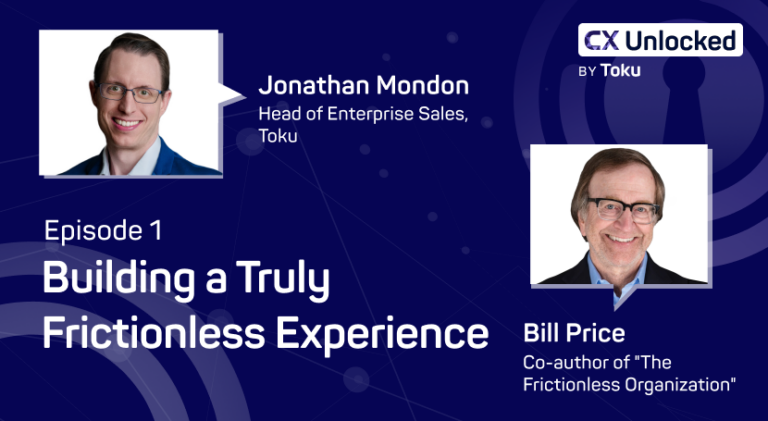What does it take to transform a legacy organisation into a digital-first leader in customer experience? For Stamford Low, Director of Customer Experience and Retail at M1, it required bold decisions, a clear vision, and the courage to embrace change. Here, we share the key takeaways from the exclusive interview.
Picture a visit to your favourite cafe.
As you approach the counter, your favourite drink is already being prepared. The barista, recalling not just your preference but the exact temperature and sweetness you like, ensures your order is perfect.
Before you even think about asking for an extra napkin or a stirrer, they’re handed to you.
Everything is anticipated, every potential hiccup seamlessly addressed.
It’s this level of forethought and proactive service that captures the essence of a “frictionless organisation.”
Though it might sound like a modern term, the idea originated more than twenty years ago.
Bill Price, co-author of The Frictionless Organisation: Deliver Great Customer Experiences with Less Effort, has been an advocate of this philosophy since his days at Amazon.
Recently, I had the pleasure of speaking with Bill on this topic, where he shared his thoughts on why frictionless customer experiences are more important than ever. He also dives deep into some common mistakes organisations make, and best practices he has observed at large, well-known brands.
You can watch the interview by clicking on the link below:
–> Building a Truly Frictionless Experience: Exclusive Interview with Bill Price
In this article, I’ll share some of the key takeaways from the interview, and my own perspective on how businesses today can build better customer experiences that are more seamless and effortless.
The enduring relevance of the frictionless organisation
Bill Price’s journey into the realm of frictionless organisations began during his tenure at Amazon, where he coined the phrase “The best service is no service.”
In essence, he envisioned that by working actively on erasing the need for contact/support, several globally-recognised companies were able to build ‘frictionless organisations.’
What stood out was not just their commitment to excellent service but their intuitive aversion to anything that looked like an obstacle or ‘friction point’ in the customer journey.
The core idea was not just about offering exceptional service when problems arise but about proactively identifying and rectifying potential issues.
In other words, why should a customer need to contact support in the first place?
This is a powerful idea that continues to drive modern customer experience (CX) strategies, shaping the very foundation of successful, forward-thinking businesses to this day.
The question then is…
Why aren’t more companies frictionless?
Bill discussed three reasons why building a frictionless organisation can be challenging.
1. Resistant to change
Many well-established brands suffer from an “it’s always been this way” mindset. They rest on their laurels, assuming that their methods, despite their faults, have always worked. They believe in the inevitability of mistakes as they grow, and the notion that they’ll overcome these challenges in time.
However, with growth, the magnitude of these mistakes often amplifies, and in today’s age, customer tolerance for such errors has dwindled.
In the meantime, customer expectations have changed drastically with the rise of the digital economy. They want services that can be consumed easily with minimum effort.
2. Disconnect from the customer
A startling number of senior executives are distant from their customer base.
The pressing question that often goes unanswered is – when was the last time these leaders personally connected with a customer? Not through reports or summaries, but genuine, direct interaction.
This detachment results in a reliance on indirect metrics, devoid of the personal touch and nuance that direct customer feedback offers.
3. Neglecting the upset customer
Finally, organisations, more often than not, overlook their most critical feedback source: the upset customer.
While some disgruntled customers voice their concerns, many don’t even bother. These silent customers, who refrain from feedback despite their dissatisfaction, are often on the cusp of turning away from the brand entirely.
By not addressing and rectifying these concerns, companies risk losing a valuable segment of their consumer base.
Speaking from my own experience working with several large enterprises on their CX operations, a common sentiment from frontline agents and supervisors stands out: the feeling of not being heard.
In fact, Bill also mentioned the same during our interview – that while working with numerous large organisations, he often hears the frontline contact centre agents say, ‘They are not listening to us.’
And by “they”, they were referring to the higher echelons of management.
This widespread feeling of being overlooked becomes a source of mounting frustration for agents as their roles become increasingly challenging, with complaints piling up and seemingly no rectification in sight.
So what should leaders do?
My recommendation is to first engage with your customer support representatives. Leaders need to stay close to the action, visit the support centre, pick up the phone, sit down next to the agents and ask them what the company could do better.
Understand their daily challenges, and immerse yourself in the feedback they constantly receive. Such insights can reveal avenues for genuine CX improvement and happier customers.
Frictionless organisations: Are you a renovator or innovator?
In today’s rapidly evolving business landscape, two archetypes have emerged, shaping the way organisations approach CX: Renovators and Innovators.
Renovators are usually older, more established companies that suddenly realise they have to do a better job in terms of CX. The innovators on the other hand, are newer companies that start thinking differently about their CX from scratch.
Xero
A great example of an innovator is Xero, a rapidly growing B2B financial accounting software company. Right from the start, they displayed a unique approach to customer support:
- No traditional inbound channels like phone, email, or live chat.
- Support is exclusively via their portal, ‘Xero Central’, which reportedly addresses the concerns of about 96% of their users.
- For the remaining 4%, Xero takes a proactive approach. Instead of a typical customer service representative, the call-back often comes from a department head or even someone responsible for a specific feature, offering a deeper level of expertise.
This approach not only creates a strong bond between the company and its customers but also stands as a testament to how Xero values efficiency and direct problem-solving.
Nike
Nike, the global athletic wear giant, also has managed to strike a balance between its legacy practices and contemporary strategies, making them both a Renovator and an Innovator.
Initially reliant on third-party retailers, they transitioned to their own branded stores and then delved into direct-to-customer channels. Key aspects of their evolved approach include:
- Recognising members across all platforms and touchpoints, offering a seamless shopping experience.
- Harnessing insights from diverse sales channels to curate personalised journeys for their members.
- Instead of routing specific footwear queries from avid runners to regular customer support, Nike directed them to their shoe engineers at headquarters. This fostered trust, provided expert answers, and gave engineers real-time feedback from the customers – feedback which they used to iterate and improve the product.
Nike’s multifaceted strategy, encompassing both traditional and direct selling, has set them apart in the marketplace, marking them as a leader in customer experience.
What can businesses learn from these companies?
I think the “Renovator” companies especially need to foster a culture of solving problems so that the organisation can make the necessary changes to become frictionless.
In Singapore, DBS bank is an excellent example of an organisation that completely transformed itself 7-8 years ago under the leadership of Piyush Gupta. The innovative, award-winning bank has used technology to rethink how they operate, while creating new products and services that make banking ‘joyful and frictionless.’
It’s also noteworthy that both Nike and Xero shared a unique tactic that allowed for direct, seamless interaction between their product experts and their end customers. This not only enhances the customer experience but also gives a company vital feedback, driving innovation and fortifying brand loyalty.
Embracing the Renovator’s ethos
Enterprises seeking to transition into a more frictionless model — where customer experience is enhanced, and inefficiencies are minimised — need to adopt the renovator’s mindset.
Here are some critical steps to consider:
1. Rethink customer feedback
The essence of a renovator’s mindset starts with understanding why customers are reaching out. Instead of using broad reason codes, businesses need to capture the voice of the customer with specificity.
For instance, “billing issues” is too vague.
Dive into the details: “Why is my bill so high?” or “Why wasn’t my refund processed?”
By narrowing down to about 25 to 50 precise reasons, organisations can get a clearer picture of genuine pain points.
2. Identify the root causes
Once the exact reasons for customer contacts are known, it’s essential to trace back to the origin.
Who in the organisation is responsible for the arising issue? It’s seldom customer service alone. Departments like marketing, IT, product design, or even legal might be involved.
Thus, channelling feedback directly to these departments can expedite solutions.
3. Move beyond averages
Averages can sometimes be misleading. Metrics like Net Promoter Score or Average Handle Time are calculated on an average basis which sometimes leads to the manager ignoring the extreme values – the detractors giving scores of 0, 1, or 2 who can give insights into severe issues plaguing your CX.
It is also important to pay attention to what you are doing well, making sure you can consistently deliver on those.
4. Cherish successes
On the flip side, understanding why some customers are deeply satisfied can help replicate success. Knowing what delights customers and finding ways to consistently replicate such experiences can create lasting brand loyalty.
The evolution of AI in contact centres
In recent times, the buzz surrounding AI, particularly generative AI, has amplified in the contact centre space. Bill believes the technology promises substantial productivity and transformative changes. Here are some of his thoughts:
1. Role of AI in enhancing empathy and listening
Historically, customer service has always emphasised the need for understanding and caring. Whether it’s someone at a hotel reception or a retail store, recognising and assisting the customer efficiently has been crucial. As AI is set to gradually take over all the simpler queries, this will empower agents to handle the more complex interactions with the empathy that only a human can provide.
AI-powered analysis has also changed the game when it comes to analysing the voice of customers by efficiently and effortlessly monitoring and categorising 100% of all conversations.
2. Intelligent assistance
One notable advantage of AI is its capability to offer real-time guidance. For instance, during a conversation, AI can suggest potential solutions and recommend knowledge base articles in real time. This intelligent assistance ensures that all agents, irrespective of their experience, have access to the best possible solutions.
The net effect is that all agents are going to become experts in their own domain.
When this happens, they will be able to elevate themselves to the level of a trusted expert and forge deeper connections with the customer.
Embracing the future of frictionless CX
In conclusion, the idea of a frictionless organisation, born over two decades ago, is as relevant today as it was then. CX remains a key battleground for businesses and the ones that can reduce operational friction while delivering exceptional service will thrive.
By adopting best practices, addressing implementation challenges, and learning from successful organisations like Xero, Nike, and Amazon, companies can embark on a journey toward becoming truly frictionless.
Learn from the Pioneer in Frictionless Organisations
Get invaluable insights from our interview with Bill Price, the trailblazer in the frictionless organisation model.
 Jonathan Mondon
Jonathan Mondon 


 Celine Ke
Celine Ke 
 Girish Dharmaraj
Girish Dharmaraj 
 Nora Huin
Nora Huin